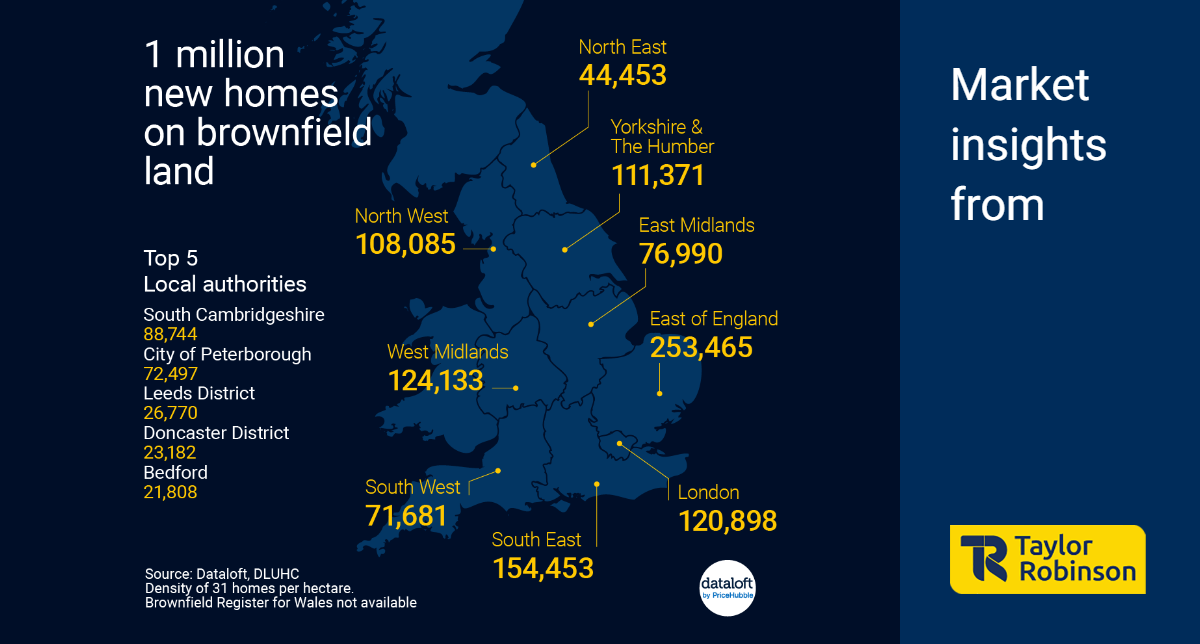
In a bid to tackle the housing crisis gripping England, the Housing Secretary has unveiled bold initiatives aimed at maximizing the potential of brownfield land for residential development. Brownfield land, areas previously developed upon, is set to become a focal point for housing construction under the new proposals, with local authorities mandated to prioritise its development.
According to an analysis conducted by Dataloft, these plans could potentially unlock over 26,000 sites encompassing 34,375 hectares of land across England. With an average density of 31 properties per hectare, this equates to a staggering 1 million new homes if all identified sites are fully developed. This move marks a significant step towards addressing the housing shortage, providing much-needed accommodation for residents nationwide.
The data further reveals regional disparities in brownfield land availability. South Cambridgeshire and Peterborough emerge as areas with the most substantial potential, offering the possibility of over 160,000 new homes combined. The East of England tops the regional charts with 8,176 hectares of brownfield land, presenting an opportunity for approximately 250,000 new homes. Conversely, the North East lags with only 1,434 hectares of identified brownfield land, capable of accommodating around 44,000 new homes. These figures underscore the varying degrees of potential across different regions and emphasise the need for tailored approaches to address local housing needs effectively.
In addition to promoting brownfield development, the Housing Secretary's announcement includes plans to streamline the planning process for property extensions. A consultation has been proposed to explore the possibility of removing planning permission requirements for certain types of property extensions. This move aims to facilitate homeowners in improving and expanding their properties without the bureaucratic hurdles currently in place, potentially fostering a more dynamic housing market.
The proposed initiatives signify a concerted effort by the government to harness the untapped potential of brownfield land and accelerate the pace of housing construction. By prioritizing development on previously used sites and streamlining planning procedures, policymakers aim to not only alleviate the housing shortage but also revitalize urban areas and promote sustainable land use practices.
However, challenges such as infrastructure provision, environmental considerations, and community engagement must be carefully navigated to ensure the success and sustainability of these initiatives. Balancing the need for housing with the preservation of green spaces and heritage sites remains a critical aspect of urban planning.
As the proposals progress through consultation and implementation stages, stakeholders, including local authorities, developers, and communities, will play pivotal roles in shaping the future landscape of housing in England. Collaborative efforts and innovative solutions will be essential in realizing the vision of vibrant, inclusive, and sustainable communities across the nation.









